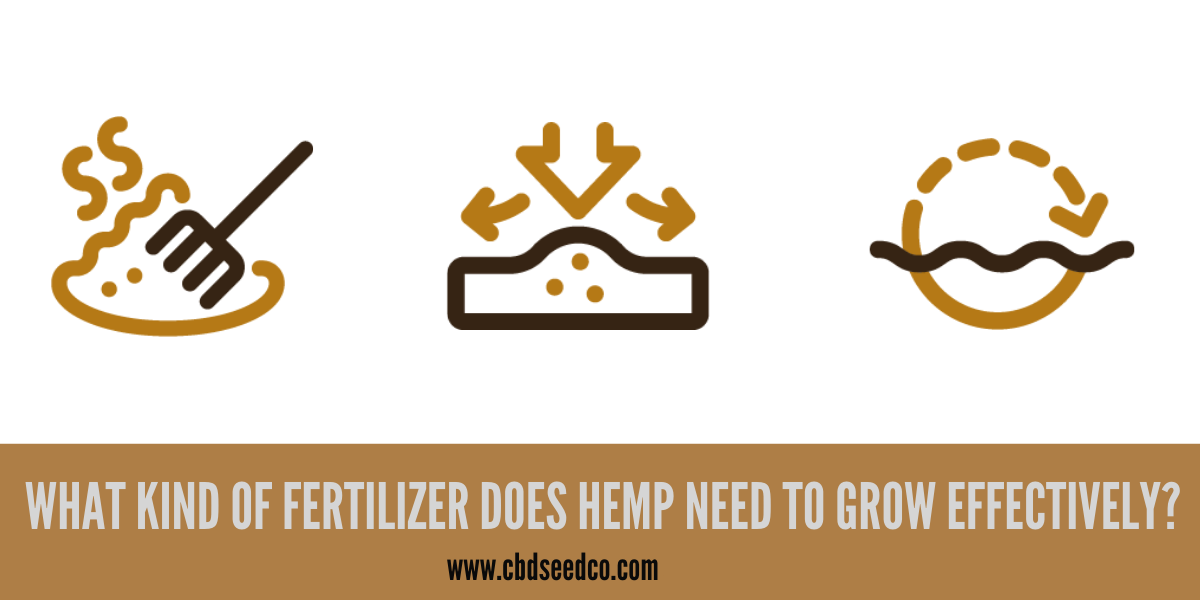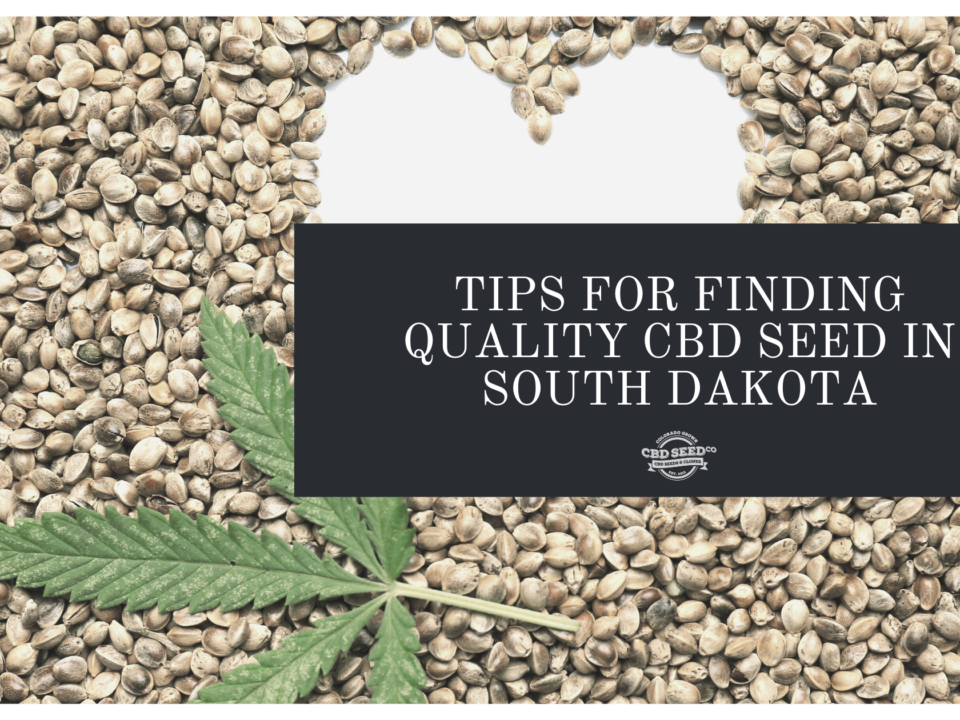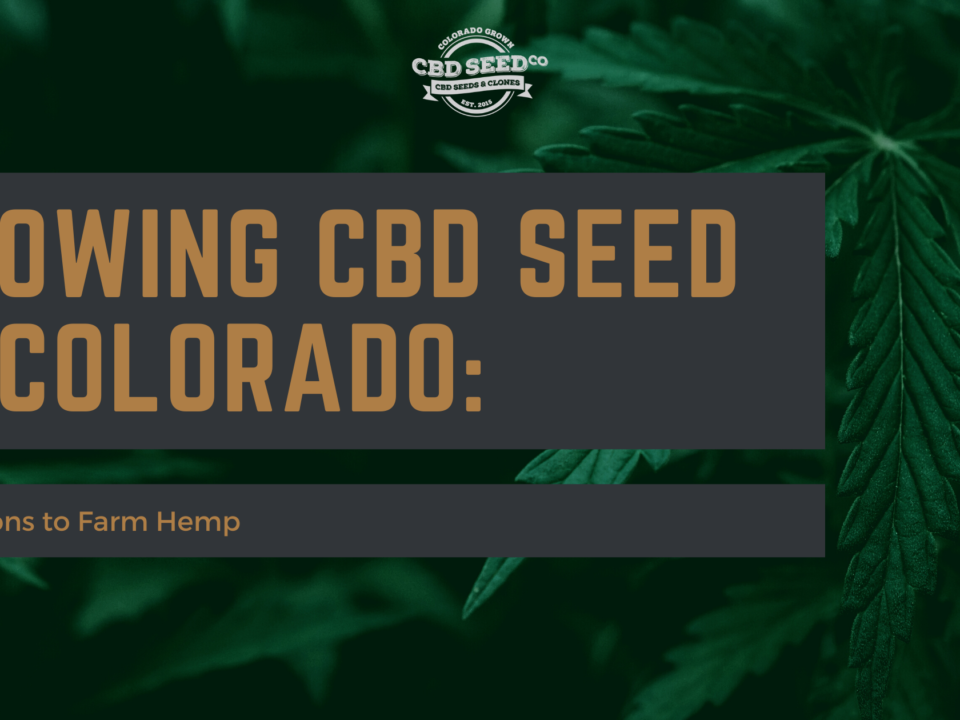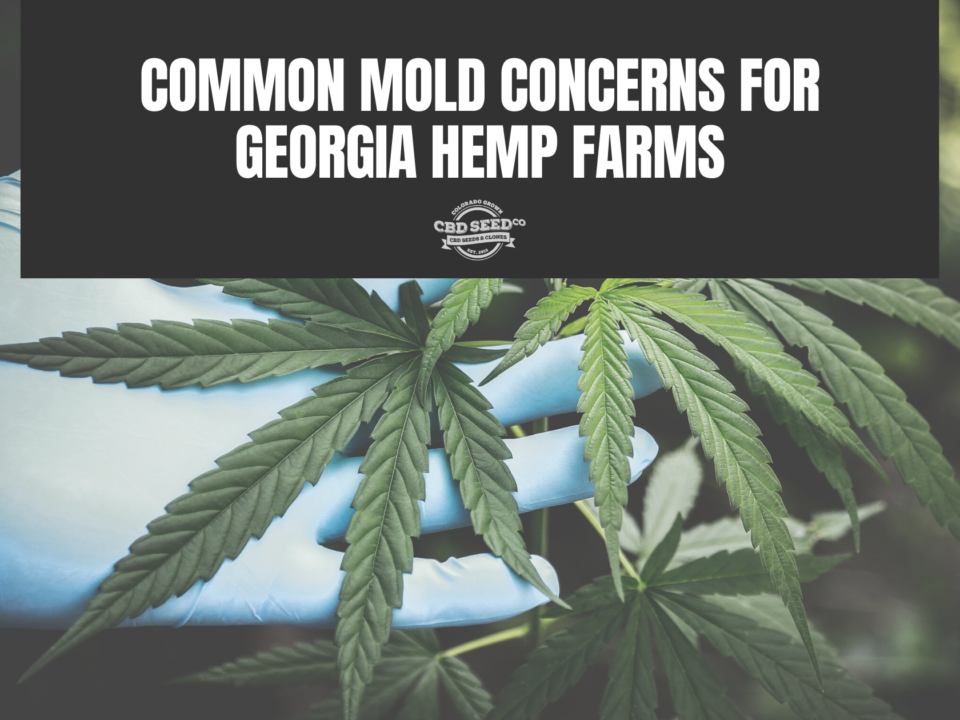What Kind of Fertilizer Does Hemp Need?

Industry Update: 6 States Keeping Hemp Pilot Programs Instead of Moving to Commercial Production
February 27, 2020
Should The US Move To 1% THC Content in Hemp?: Part 1
February 28, 2020Before we get into the fertilizers that hemp needs to grow–we should understand why we are only now rediscovering the proper cultivation practices, like fertilizing, for Industrial hemp.
The History of Farming Hemp In The US
Cannabis sativa L. (hemp) has been around a long time and throughout history, many human civilizations have been cultivating it. Traditionally, hemp was cultivated as a fiber source so most genotypes have very low THC content. Here in the US, hemp was a crop critical to our early success. From hemp fibers used in covered wagons and clothing to hemp oil used in paints, inks and varnishes–the hemp crop proved extraordinarily useful in early American society. Hemp production declined a bit due to tobacco and cotton in the early 20th century but was still farmed and used on a smaller scale. In 1937, hemp was not necessarily banned under the Marihuana Tax Act but taxed so heavily as to dissuade farmers from growing it. It was not made categorically illegal until 1970 under the “Controlled Substances Act”. Recently, in 2014 continuing on to 2019 that legal bans on hemp under .3% have been lifted or redefined. This means farmers in the US are starting off new to hemp and must learn certain practices. One of these practices is fertilizers.
Things to Know About Fertilizing Hemp
Numerous generations of professional farmers have no experience growing hemp. Some passed down knowledge or growing processes have been lost. But, since hemp is a lot like other crops and educational research has been going on for years–there is a fair amount of fertilizer knowledge out there. Below we’ve listed some guidance based on this. Keep in mind, your CBD Hemp farm is unique so this advice must be taken on a case by case scenario. It is best to read the framework below and then modify it for your farm’s condition and needs.
Nitrogen: Hemp does need a lot of nitrogen but not an excessive amount. Research points to a good amount being 100 pounds of nitrogen per acre–much like corn.
Phosphorus: A healthy dose of phosphorus is needed in hemp fields because it is a flower producing plant but it does not need an excess of it. A standard 50 pounds of phosphorus per acre will do. A few common mistakes new hemp farmers make applying phosphorus along with calcium sources (lime and bone) This can lock it up by turning into calcium phosphate.
Potassium: Hemp is a big consumer of potassium. It eats-up around 80 pounds of potassium per acre. It’s needs are higher than crops like corn and wheat. So, although CBD hemp mostly follows the same fertilizer formula for higher potassium consumers than most crops, hemp is an outlier in potassium consumption.
Sulfur: Hemp needs some sulfur–more so than a lot of crops. Something around 20 pounds of sulfur per acre, sulfate sulfur will work.
Calcium: This source of nutrients is very important to any crop and hemp is no exception. If at all possible apply your calcium and your phosphorus at different times.
Micronutrients: These shouldn’t be left out of your hemp farming plan. Kelp meal is very expensive, but if it’s in the budget, kelp meal around 600 pounds an acre. If you want to save some money, you can do something like Azomite at around that same application rate.
Compost: In general, a lot of people over-do-it on compost. This is because compost can contain very high levels of potassium and salt. This means, if you apply compost, watch out for too much potassium.
BORON: Hemp is not overly boron sensitive. But boron is probably not a great idea, because the line between deficiency and toxicity is so thin. For this reason use caution applying boron and maybe omit it altogether.
Lime: Lime should be applied at a max of two tons per acre. If you are converting an old hayfield or fallow vegetable ground use a maximum application right away.
Fish emulsion: A cost-effective option for hemp is fish emulsion to take care of nitrogen issues. Roughly a gallon of fish emulsion per acre, regularly.
All-Purpose Fertilizer: This is a blend of things like feather, fish, bone and kelp. It also includes rock dust and things like flaxseed meal as well.
Mycorrhizal fungi: You can use endo or ecto symbiotes–but the endo is what will be utilized by your hemp crop.
Download the graphics below as quick reference sheets.
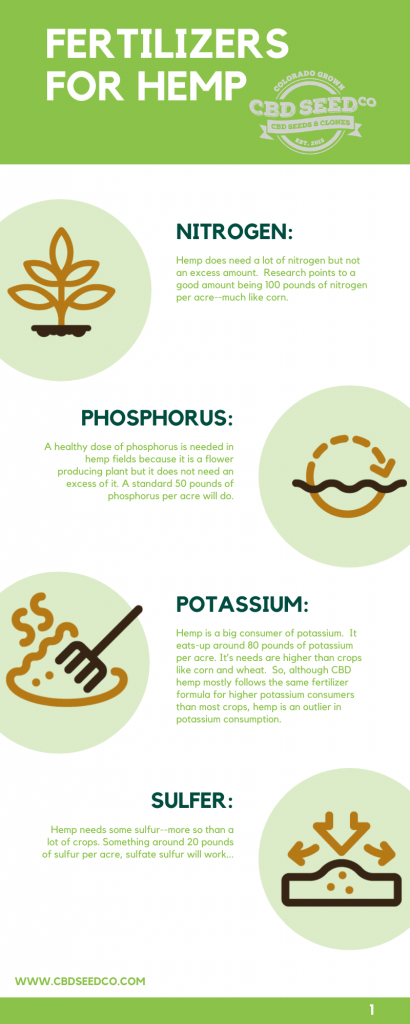
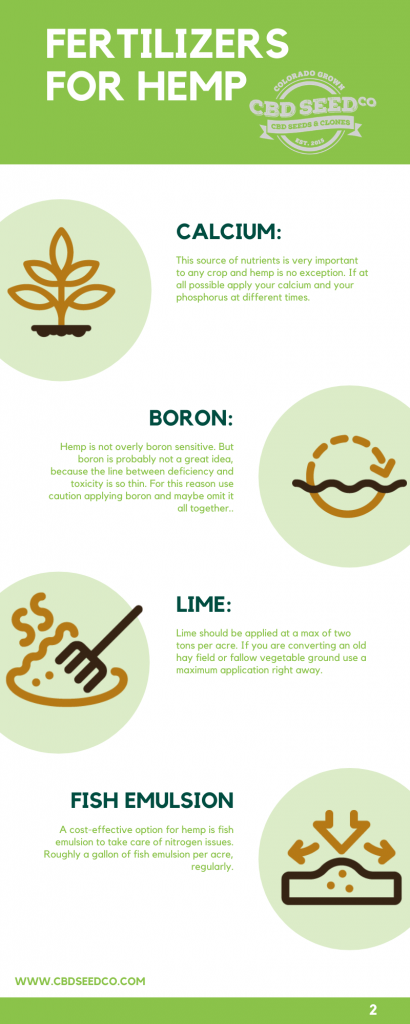
This is an overview of hemp fertilizer. For more information on anything hemp-related contact us at CBD Seed Co today! We are one of the nation’s largest vertically integrated hemp companies. This means we have the ability to work with you on everything from seeds to sale, white-label products, and CBD wholesale products.


